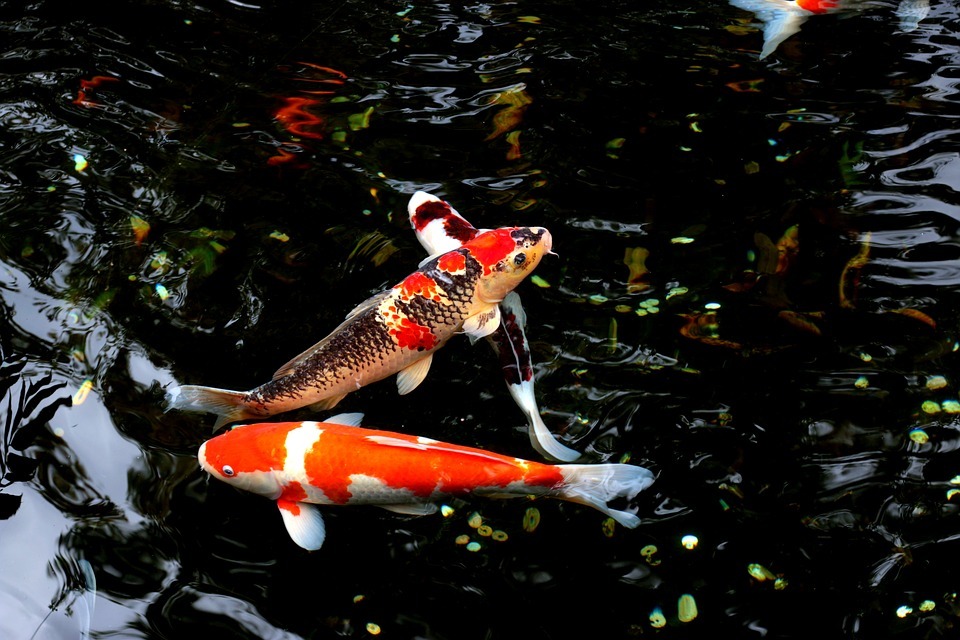Introducing New Fish to the Garden Pond
With spring having officially arrived (even if it might not seem like it just yet!), and with promises of several balmy summer months in the not too distant future, now is the time to carry out routine maintenance on your pond if you haven't already. Helpful pointers may be found here.
The idea of being able to relax in the garden whilst enjoying watching a group of fish gliding effortlessly through the water, or winding lazily around the lilies on a warm summer's day, holds great appeal for many. Whether you have built a new pond and are stocking from scratch, or are planning on new additions for an established pond, the adding of new livestock must be thought through carefully if the fish are to thrive in their new surroundings.
The type of fish that you choose chiefly depends on how large your pond is, not only in terms of length and
If the pond is very restricted in volume, and is without filtration, it would be best to keep this as a wildlife pool only. These can be fascinating to observe in their own right as various native critters such as frogs and dragonflies come and go throughout the year. However, if you have a more average-sized, filtered pond, then goldfish, sarasa comets, and shubunkins are undoubtedly the most popular choice of fishy inhabitants. Standard orange goldfish are always available, along with a beautiful sunshine yellow variety. Sarasa comets display a mixture of orange and white, with shubunkins sporting orange, white, and black. No two sarasa comets or shubunkins share the same pattern as each other, which is useful when trying to observe individual fish. For the more voluminous pond, you may consider other fish such as golden rudd, orfe (blue or gold), or tench (green or gold), all of which grow somewhat larger than goldfish but will live alongside them quite happily in larger quarters. And for those who are fortunate to have a sizeable pond that is at least 1.2m/4ft deep along with plentiful swimming space, then this will be suitable for koi.
The number of fish that your pond can comfortably support depends on the type/size of filtration, along with how much oxygen there is in the water. Fountains, airstones, waterfalls, and oxygenating plants will all affect this to some degree, but in general, it is the surface area of the pond which makes the most difference in this respect - the larger the better. A very loose rule of thumb is to allow 25cm of fish per square metre (or 1" of fish per square foot). If you are
Once the water temperature remains at a steady 10 deg C (50 deg F) or above, new livestock may be added. When stocking your pond, bear in mind your fish will continue to grow (and possibly even breed). To populate an empty pond, and tempting though it is to see it full, don’t rush into buying all your fish in one go. It is far better to stock the pond gradually over several weeks/months, as this will give the good bacteria in the filtration system time to build up to sufficient numbers in order to cope with breaking down the increased amount of waste produced. A Maidenhead Aquatics pond master test kit will help you to monitor the water to make sure conditions are safe, and will indicate when the time is right to add a few more fish.
Remember to err on the side of caution - it is always better to have slightly fewer fish than too many. Particularly in warmer weather when the fish are more active and the water is holding less oxygen.
Once you have chosen your new fish, your new acquisitions will be safely packaged for a journey of 2-3 hours. For any journey that is expected to take longer than this, please consult a member of staff who will ensure appropriate packaging. To minimise changes in water temperature on the way home, and to keep the purchase stable in your vehicle, place the bags into a polystyrene fish box (these can be purchased in-store for a small fee) or into an insulated picnic bag/thermal fish transportation bag and situate somewhere secure e.g. in a footwell. Do not be tempted to check on the livestock by removing the fish bag from the outer packaging until you get home, as this could cause unnecessary stress/shock, and even death. And it might be obvious, but do avoid playing excessively loud music in the car at this time. It is imperative that you get your livestock home promptly - plan in advance so you do not need to stop off anywhere else on your way home.
Once home, carefully unpack your new livestock under quiet conditions. Remove all the outer packaging, leaving just a single layer plastic fish bag around each purchase. Float the bag/s on the surface of the pond for 45 minutes, mixing in a little of your pond water every 5-10 minutes. If you roll down the top of each bag this will ensure they float. After several mixes and 45 minutes, gently release the fish. Please remember that if it is an exceptionally hot day when you bring your fish home, do not leave the floating bag/s in direct sunlight - be sure to provide some shade whilst the fish acclimatise - and reduce the waiting/mixing time by 15 mins or so. Rising water temperatures can have a drastic and detrimental effect on oxygen levels, particularly in smaller volumes of water, such as in a fish transportation bag, so observe your new acquisitions carefully whilst they acclimatise.
It is best not to feed the pond on the same day as adding new




